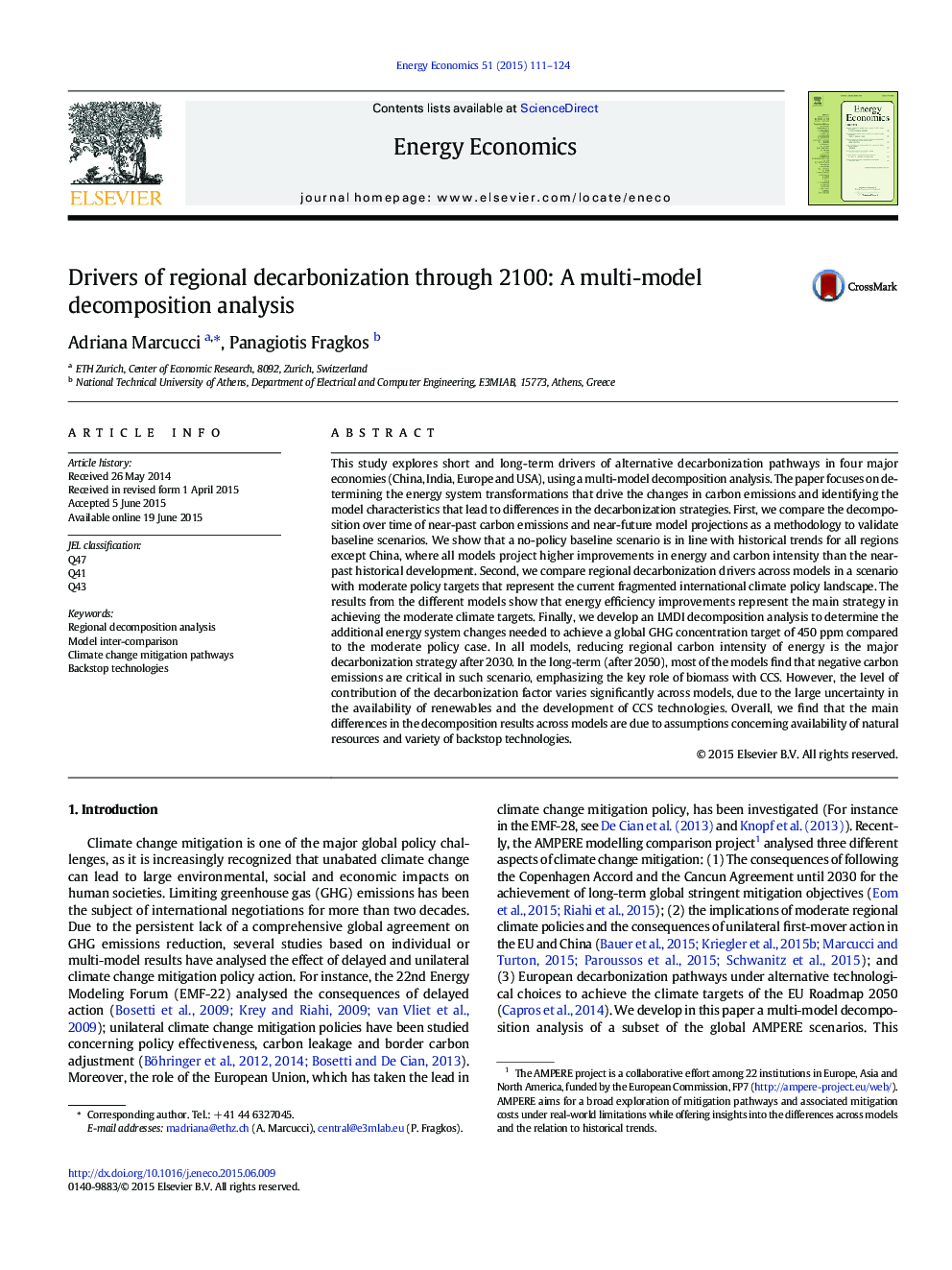| کد مقاله | کد نشریه | سال انتشار | مقاله انگلیسی | نسخه تمام متن |
|---|---|---|---|---|
| 5064222 | 1476712 | 2015 | 14 صفحه PDF | دانلود رایگان |
- We develop a multi-model decomposition analysis of regional carbon emissions.
- Decomposition analysis of emissions is used to diagnose scenarios for IAMs.
- The main drivers to achieve current moderate mitigation targets are identified.
- We present an LMDI decomposition of a mitigation scenario with negative emissions.
- We identify main model assumptions leading to differences in decomposition results.
This study explores short and long-term drivers of alternative decarbonization pathways in four major economies (China, India, Europe and USA), using a multi-model decomposition analysis. The paper focuses on determining the energy system transformations that drive the changes in carbon emissions and identifying the model characteristics that lead to differences in the decarbonization strategies. First, we compare the decomposition over time of near-past carbon emissions and near-future model projections as a methodology to validate baseline scenarios. We show that a no-policy baseline scenario is in line with historical trends for all regions except China, where all models project higher improvements in energy and carbon intensity than the near-past historical development. Second, we compare regional decarbonization drivers across models in a scenario with moderate policy targets that represent the current fragmented international climate policy landscape. The results from the different models show that energy efficiency improvements represent the main strategy in achieving the moderate climate targets. Finally, we develop an LMDI decomposition analysis to determine the additional energy system changes needed to achieve a global GHG concentration target of 450Â ppm compared to the moderate policy case. In all models, reducing regional carbon intensity of energy is the major decarbonization strategy after 2030. In the long-term (after 2050), most of the models find that negative carbon emissions are critical in such scenario, emphasizing the key role of biomass with CCS. However, the level of contribution of the decarbonization factor varies significantly across models, due to the large uncertainty in the availability of renewables and the development of CCS technologies. Overall, we find that the main differences in the decomposition results across models are due to assumptions concerning availability of natural resources and variety of backstop technologies.
Journal: Energy Economics - Volume 51, September 2015, Pages 111-124
